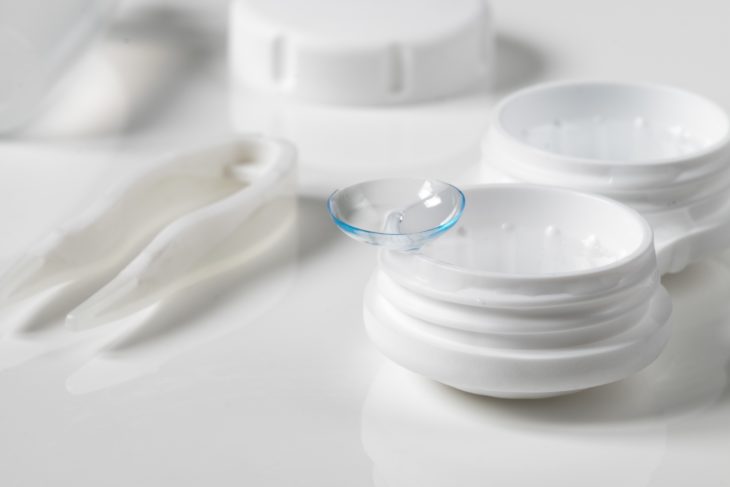Contact lenses have become a very popular choice among people out in the UK, whether it is for proper eye care for individuals who do not want to wear glasses or for colored eyes on Halloween and other parties.
And according to our experts at colouryoureyes.com there are different types of contact lenses, made of different materials for different purposes.
Contents
Soft contact lenses
These contact lenses are made of a gel-like watery plastic known as hydrogels. These lens types are thin and very comfortable to wear; any user can adjust to them instantly.
Silicone hydrogel lenses
These are an advanced version of hydrogels introduced in 2002. They are more porous than regular hydrogel lens and allow more provision of oxygen for the cornea.

Source: Mills Eye Care
Gas permeable lens
They are a hard lens type, but they are porous and allow for oxygen to pass through so that they can be worn rather comfortably than other hard lenses.
Hybrid contact lenses
Hybrid lenses are made to provide comfort which rivals soft. They have a rigid gas permeable zone, but despite these features, they are not much popular, maybe because they are expensive to replace it and they don’t fit that easily.
What types of contact lenses are there?
Current advancements in contact lenses technology have given consumers vast options to choose from. The choices are broad and with amplified comfort and ease of use. When it comes to the essentials, there are many options available. They can be hard, soft, or somewhere in between, as mentioned above. There are further options available relating to how long lenses can be worn, the material used in manufacturing and how many different uses lenses have. There are different choices on the table which are suitable for different lifestyles and purposes and you can always discuss with your specialist to help you with the right choice. Which means that there are more dynamics to consider than simply which style you prefer, so be sure to trust an eye care specialist’s recommendation and advice.

Source: WebEyeCare
Disposable soft lenses
Water absorbing lenses were first designed back in the early 1960s and now they are more than popular among lens users.
Soft lenses have a water content which ranges from 50 to 80 percent. They normally cover the whole of the pupil and some of the white part of your eye.
You can wear disposable lenses for a day or for a whole month, it varies. Consisting of water content and designed to be thinner, they provide comfortable wear. You will find the different type which can be worn for a day only and be disposed of after use while there are also long term disposable lenses which need to be disinfected after every use. Disposable contacts can be prescribed for everyday use or long term wear, depending on the brand of the lens and why you need to wear it.
Disposable contacts never last for a lifetime. Rather, they have an expiry and have to be disposed of after that. Each brand of contact lens has an exclusively suggested replacement schedule based on the capability of the lens to allow provision for oxygen and to shed proteins from the surface.
Daily wear contacts
Daily wear contacts are designed to be worn for the whole day, basically around eighteen hours and so, and are crafted such that they are comfortable for hours on end. They are available in reusable and disposable categories, meaning that they can be used several times and disposed of after one-time use.
Individuals most often use these lenses for parties and stuff like that, they are available in different colors for events and parties, you can also buy ones in Halloween category.
One must remember to put them off before sleep. Otherwise, they may cause damage to your eye’s health.

Source: Bryan Low
Extended wear contacts
Daily wear contacts have to be removed prior to sleeping but extended wear contacts can be worn while awake or asleep; they are designed as such.
One downside of initial extended wear contacts is the lack of oxygen flow and the distress that can come from long term wear, including dry, itchy eyes. With technological advancements, experts are working on finding the right solution these lenses so that one can wear them comfortably for long hours and prevent it from depositing dirt under the lens
Different color variations in lenses
There are opaque lenses available which are colored and designed to cover the eyes completely and appear to change the color of your eyes. These are mostly used for contacts for parties and Halloween.
Other color type includes the enhancers which are styled such that they enhance the natural color of the eyes, as the name suggests, they do not change the color of one’s eyes.
Lastly, you have visibility tinted lenses, which, unlike enhancers and opaque, do not hide or mask the color of the eyes. They have a slight tint added to them, so they are visible from the case or when they accidentally fall down.
